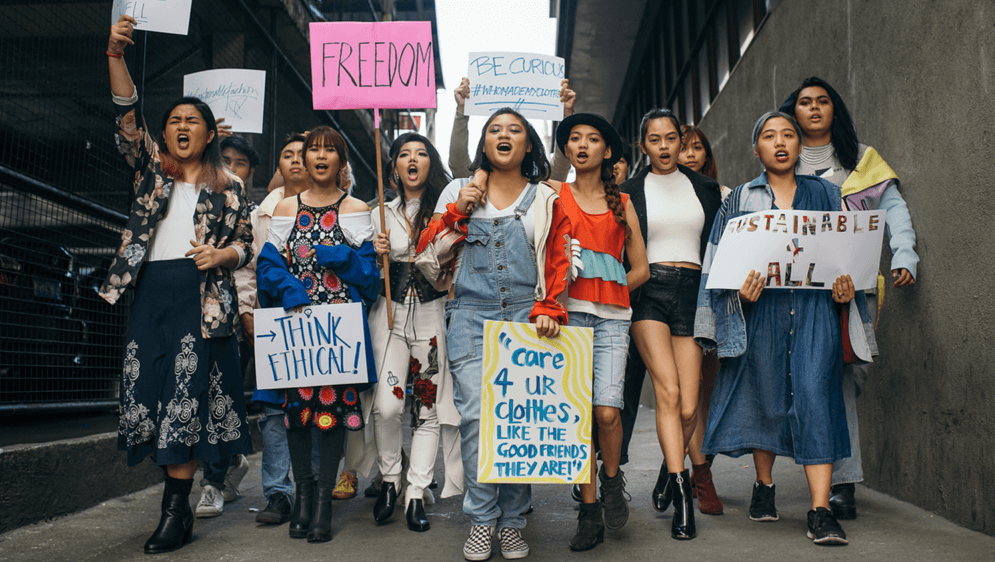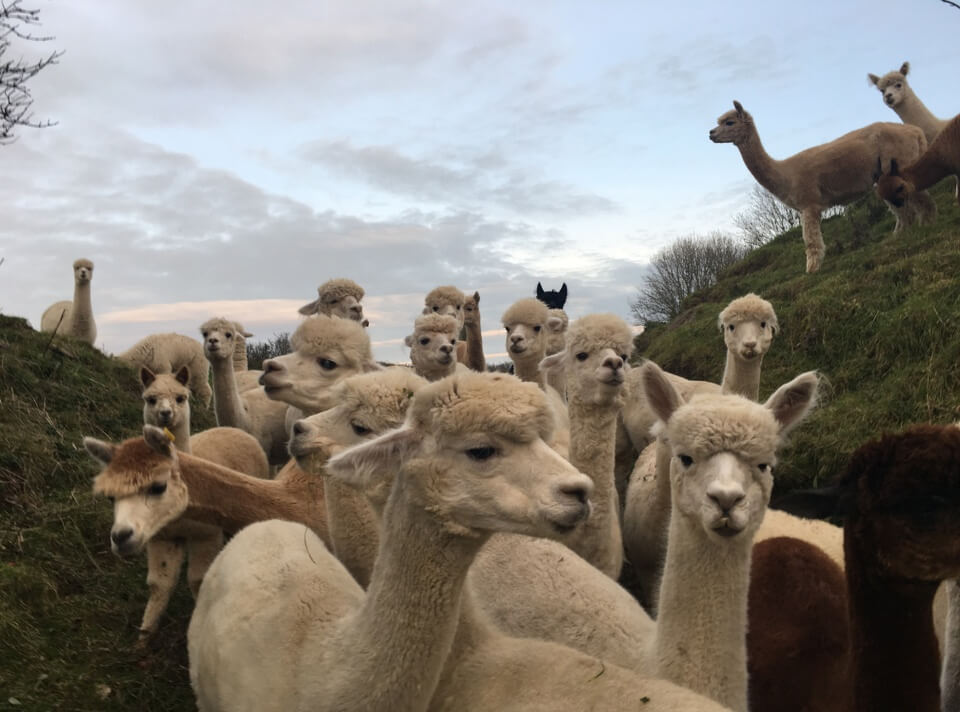
There is an increasing demand for transparency in the fashion supply chain. Source: Shutterstock
Blockchain to enable transparency in the fashion supply chain
BEST known as the technology behind digital currencies, blockchain is now set to disrupt the fashion industry with the potential to remove the opacity of the apparel supply chain.
With many parties typically involved in the production of a piece of clothing, transparency in the supply chain journey is not something that is easily accessible for both consumers and businesses.
However, the demand for supply chain transparency – the origins of our clothing and the stages it goes through before reaching us – is increasingly growing, backed by various campaigns such as #whomademyclothes, run by Fashion Revolution.

Students at SoFa Design Institute, Philippines. Source: http://fashionrevolution.org
One company aiming to help the fashion industry become less opaque through the use of blockchain technology is A Transparent Company.
Founded by Neliana Fuenmayor, A Transparent Company led the strategy and implementation for a collaborative case study between Danish fashion designer Martine Jarlgaard and the app behind the technology, Provenance.
Together, they developed a pilot project to track end-to-end a UK Alpaca supply chain, from farm to finished product.
According to Fuenmayor: “[As] consumers we want to know that what we are buying is true and education on how we can trust the information is needed.”
Blockchain enabling transparency in supply chain
Each step in the production process is registered and tracked on the blockchain via the Provenance app – from shearing at an Alpaca fashion farm in England, to spinning at Two Rivers Mill, through to knitting at Knitster LDN and then finally to the designer’s studio in London.
A unique digital token is given to each garment which enables Provenance to verify every step of its production and create a digital history of this, including location data and timescales. This information is presented through the app, which consumers can access through their item’s QR code or NFC-enabled label, working on both Apple and Android devices.
Fuenmayor said this is especially useful for the APAC region, where “the adoption of tech-savvy-millennials scanning QRcode is much much wider than in the West, therefore connecting products to consumers is much more approachable”.
“…and of course, most of the fashion supply chains are in countries such as China, Vietnam, Bangladesh, so the implementation starts there,” she added.
When asked her opinion on whether blockchain will enter the mainstream fashion industry, Fuenmayor told Tech Wire Asia: “It will take some time, but it is happening, it’s vital for proof of origin and authenticity, to help fashion businesses track their products at every point of their supply chain.”

Alpacas on the farm in Somerset, UK. Source: provenance.org
Building consumer trust
“Fashion supply chains are complex and often opaque, information sitting on linear systems won’t solve the trust issue,” Fuenmayor told Tech Wire Asia.
Fuenmayor hopes blockchain technology can educate consumers to trust information stored in a blockchain rather than a centralized system as is the case today – ultimately building consumer trust in the fashion industry.
“We see blockchain implementation in fashion supply chains to aid for circular systems, open and decentralized, where being a reliable supplier is part of incentives for brands to adapt to the tech, so they can gain confidence to become a transparent company,” she said.
Transparency in clothing is currently limited to “made in” labels, which often only reference the last part of the production process.
With blockchain, however, we are able to see every step, with the comfort in knowing the information is accurate as it cannot be tampered with in any way.

Each step in the production process of a piece of clothing is registered and tracked on the blockchain via the Provenance app. Source: https://www.provenance.org
“Full transparency and traceability becomes a stamp of approval allowing consumers to make informed choices with no extra effort,” Martine Jarlgaard told Forbes.
A more sustainable future for fashion
Sustainability in the fashion industry is an ongoing concern. Clothing production is increasingly growing, with one study reporting an annual production rate exceeding 100 billion items for the first time in 2014.
On top of this, research has found consumers are keeping pieces of clothing for half as long as they did 15 years ago, with almost three-fifths of all clothing ending up in incinerators or landfills within one year of being made.
https://t.co/IctUhGJYQl @fashionandmash #future #now #restart #fashion #innovation #tech #AR #MR #AI #transparency #martinejarlgaard #london pic.twitter.com/wnN0TYUMXx
— MARTINE JARLGAARD (@JarlgaardLondon) July 5, 2017
Blockchain has emerged as a potential solution for sustainability for many sectors as well as fashion, from energy to agriculture. For instance, one pilot program was carried out by Provenance to track and verify tuna caught by Indonesian fishermen following the problem of fake foods.
For the fashion industry, the storytelling of a piece of clothing through the use of blockchain is hoped to build a stronger connection between the consumer and clothing, with hopes clothing will be kept longer.
Fuenmayor added: “It’s not only about sustainability, it’s about operating more cost-efficient supply chains, compliance with new regulations such as UK modern slavery act or France Duty of Care and to connect to their consumers.”
According to Fuenmayor, the reaction to the pilot has been “amazing”, generating many great leads on which the company are currently working.
“As the founder of A Transparent Company, who envisions blockchain technology implemented in fashion supply chains, this was a great milestone for the fashion industry,” she said.
While the use of blockchain technology to create a more open and transparent fashion industry is looking promising, Fuenmayor acknowledged this may take time,
“The potential of blockchain is like the Internet in the early 90s. We simply don’t know until we experiment more and more.”
In order for technology to disrupt supply chains, a more open fashion industry is needed.
“Blockchain implementation is about a different mindset for the fashion industry that desperately needs it; thankfully we can see how fashion houses are changing constantly their CEOs or creative directors,” she added. “Embracing technology in fashion needs new minds – from silos to openness, from linear to circular supply chains.”






